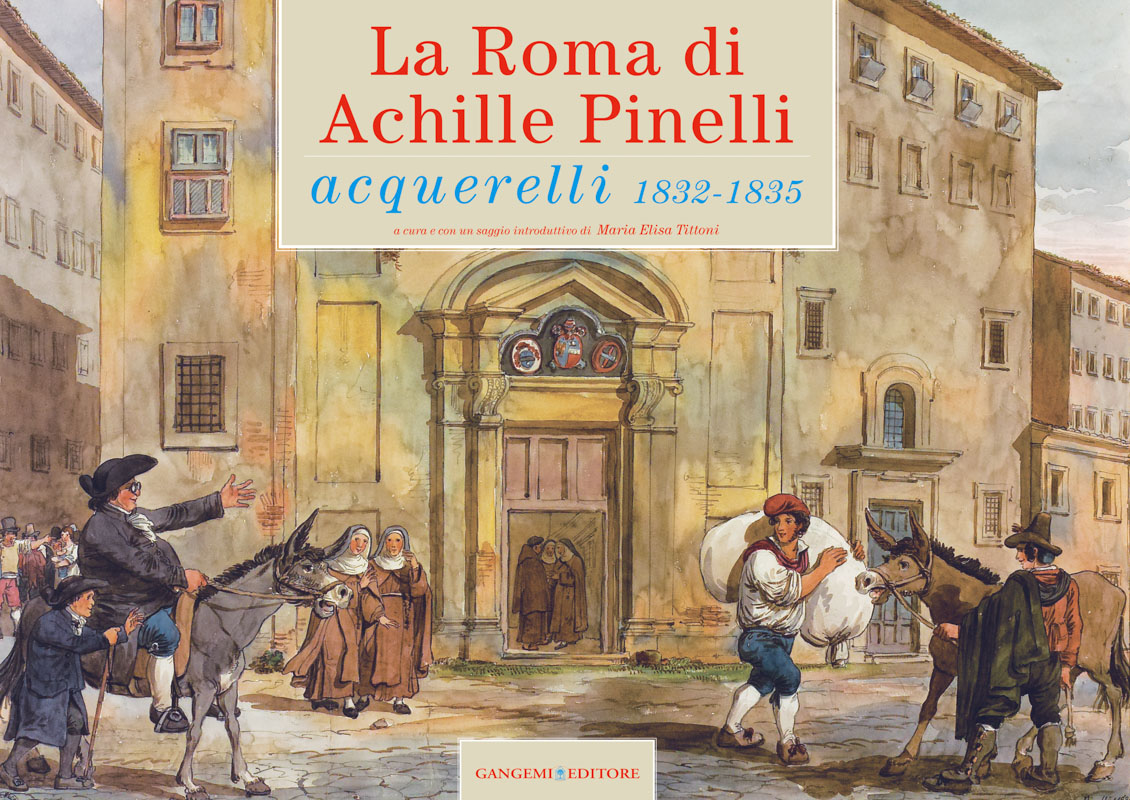La Roma di Achille Pinelli
Acquerelli 1832-1835
A cura di: Tittoni Maria Elisa
Formato: 24 x 34 cm
Legatura: Filorefe
Pagine: 64
Anno edizione: 2007
ISBN: 9788849213034
EAN: 8849213034
UB. INT. : T401C T507c V16c V26h
Contenuto
Figlio del più noto Bartolomeo, Achille Pinelli nasce a Roma nel 1809 e muore a Napoli nel 1841. Il pittore realizza tra il 1832 e il 1835 una serie di circa duecento acquerelli, tutti conservati presso le raccolte del Museo di Roma, dedicati alla rappresentazione delle chiese della città con in primo piano episodi desunti dalla vita quotidiana di popolani e borghesi. In queste vedute vengono riprodotti molti edifici oggi non più esistenti e pur con qualche imprecisione e ingenuità, forniscono una preziosa testimonianza di angoli della città scomparsi o radicalmente mutati nel corso del tempo. Le vivaci scene che animano le vedute evocano invece lo stile di Bartolomeo, come nel caso dell’acquerello ambientato nei pressi della chiesa di Santa Maria della Scala, che presenta in primo piano la festa dei montanari abruzzesi culminante con il “ballo dell’orso” o la festa delle fragole che si teneva nella piazza antistante il Pantheon il 13 giugno, festa di sant’Antonio, quando una piccola statua del santo, in un tabernacolo adorno di fragole e foglie, veniva portata in corteo per le vie della città. Sono inoltre esposte in mostra, in omaggio allo stile del padre Bartolomeo, scene che illustrano la pittoresca vita romana dell’epoca tratte dalle più note incisioni realizzate da quest’ultimo quali: La bottega del ciabattino, con la minuziosa e puntuale ricostruzione della bottega, e degli arnesi del calzolaio o La Carrettella delle ottobrate, in cui, con grande freschezza, Achille Pinelli illustra il ritorno da una scampagnata di “minenti” romane, ovvero di giovani popolane eminenti per ingegno e per vivacità. La selezione delle settanta opere esposte nelle sale di Palazzo Braschi è dunque un omaggio ad uno dei protagonisti del mondo artistico romano dell’Ottocento e si propone come un esempio di valorizzazione del vastissimo patrimonio conservato nelle raccolte del Museo di Roma.
Son of the more famous Bartolomeo, Achille Pinelli was born in Rome in 1809 and died in Naples in 1841. Between 1832 and 1835 the painter created a series of approximately two hundred watercolours, all of which are conserved in the collections of the Museo di Roma, depicting the city’s churches, with episodes from the daily life of the working and middle classes in the foreground. Many buildings which no longer exist today are depicted in these views, and although there is some imprecision and creative license, they provide precious evidence of corners of the city that have disappeared, or changed radically over the course of the years. The animated scenes which enliven the views recall Bartolomeo’s style, as, for instance, in the watercolour scene set near the church of Santa Maria della Scala, which shows in the foreground the traditional celebrations of the Abruzzi mountain dwellers, culminating in the “dance of the bear” or the ritual feast of strawberries that took place in the piazza in front of the Pantheon on the 13th June, Saint Anthony’s day, when a small statue of the saint, in a tabernacle decorated with strawberries and leaves, was carried in a procession through the streets of the city. Also exhibited, in homage to the style of his father Bartolomeo, scenes illustrating the picturesque life of the period in Rome taken from the latter’s most famous engravings. On display, for instance, are The cobbler’s shop, in which the shop and the cobbler’s tools are recreated in minute and exact detail, or The cart of the grape harvest festival in which Achille Pinelli depicts, with great freshness, the Roman “minenti”, young Romans outstanding for their ingenuity and vivacity, returning from the feast trip to the countryside. The selection of seventy works on display in Palazzo Braschi exhibition halls, pays homage, therefore, to one of the major figures of the Roman art world of the Nineteenth century, and is an example of how the vast heritage conserved in the collections of the Museo di Roma can be utilized.
Parole chiave
Condividi su













